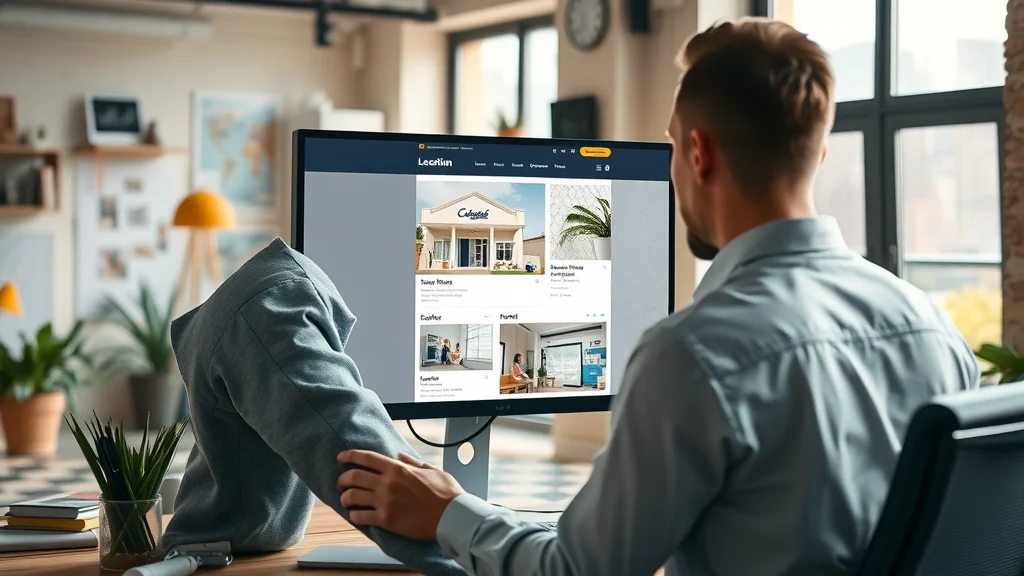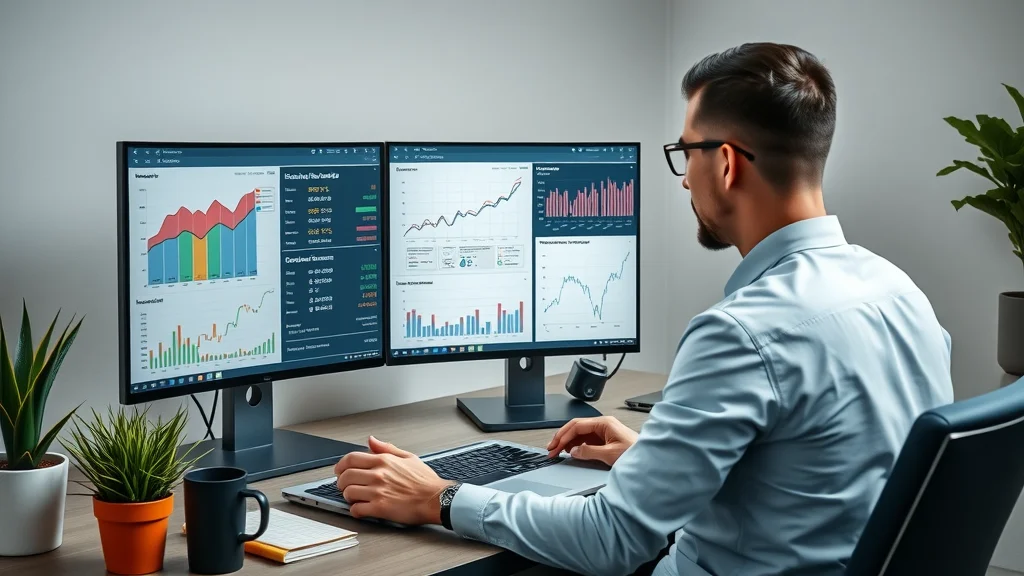Did you know that 78% of local mobile searches lead to an offline purchase? This startling fact reveals just how powerful nearby search optimization can be for your business. Whether you run a cozy bakery or a local hardware shop, mastering local SEO can put your business in front of customers when they’re ready to buy — right in your neighborhood. In this comprehensive guide, we’ll uncover essential strategies you can use right now to boost your local search visibility and attract more foot traffic than ever before.
Unveiling the Power of Nearby Search Optimization: A Surprising Truth
Nearby search optimization isn’t just another buzzword; it’s the strategy that determines whether your business tops the search results when customers search “near me.” As consumers increasingly turn to their phones to find products and services in their area, being visible in local searches means more eyes on your business and, more importantly, more visits to your shop or service area. Too many local businesses still ignore this powerful SEO tactic, missing out on potential customers who are already set to buy.
The secret to success in local SEO goes beyond the basics. It requires a deep understanding of how search engines rank local businesses, the role of Google Business Profile, and why structured business info matters. Throughout this article, you’ll learn straightforward steps — from optimizing your business profile and maintaining NAP consistency to harnessing customer reviews and building citations. With actionable tips and the right tools, your business can dominate the local search ranking and drive consistent traffic, both online and offline.

Startling Fact: 78% of Local Mobile Searches Lead to Offline Purchases
That’s right — 78% of people who search for a local business on a mobile device end up visiting a store within the next day. This figure shows just how important it is to show up when it counts. Think about your customer’s journey: they whip out their phone, search for a solution “near me,” and make a purchase either that day or the next. If your business profile is missing, incomplete, or ranks below competitors, you’re losing valuable business to rivals who have invested in search optimization.
This statistic highlights the urgent need for local SEO. Searchers are often ready to buy, and your presence on the first page of search results could translate directly into more sales and higher local rank. Let’s explore exactly what you need to master this game-changing opportunity.
What You'll Learn About Nearby Search Optimization
- The fundamentals of nearby search optimization
- How local SEO, business profiles, and Google Business Profile contribute to search ranking
- Strategies to improve local search visibility and search engine results
- Step-by-step actions to optimize your local business for 'near me' searches
- Essential schema markup and search optimization techniques
Understanding Nearby Search Optimization and Its Impact
Defining Nearby Search Optimization
Nearby search optimization is the process of making your local business more discoverable when potential customers search for products or services “near me” or within a specific vicinity. It combines local SEO, optimized business info, and search algorithms that prioritize relevance, proximity, and prominence. This means that search engines like Google use location data, Google Maps integration, and structured schema markup to deliver the best local results to people searching in your service area.
When your business leverages nearby search optimization, you increase the chance that your shop appears at the top of local search results. This puts your business profile in front of more searchers, meaning higher search visibility, stronger local ranking, and greater opportunity to turn online interest into in-store visits. Whether you own a coffee shop or a boutique, integrating these practices dramatically expands your reach within your immediate community.

The Importance of Local SEO and Search Optimization
Local SEO is the cornerstone of nearby search optimization. It ensures that your business appears in the right places — from Google Maps to the “local pack” on search results pages. Local SEO tactics include claiming your Google Business Profile, ensuring consistent business info, optimizing for mobile, and building location pages that speak directly to neighborhood audiences. By improving local SEO, you strengthen your foothold in local search rankings and boost your overall online presence.
Search engines prioritize businesses with current, accurate details and strong reputations. That’s why managing your business info, gathering customer reviews, and utilizing structured data like schema markup fuels better search visibility. These strategies work together to make your business profile more relevant and accessible for both search engines and potential customers, driving more local search traffic and leads to your door.
As you refine your local SEO approach, it's also valuable to see how real businesses leverage these strategies for tangible results. For example, the recent Burton House refinance in Beverly Hills demonstrates how local visibility and strategic positioning can support significant business growth and investment within a community.
How Local SEO Boosts Nearby Search Optimization for Your Business
Key Components of Local SEO
The backbone of effective local SEO lies in several critical areas: Business citation accuracy, comprehensive profiles on Google and directories, keyword targeting, and robust engagement with customer reviews. Ensuring your phone number, address, and contact details are consistent across all platforms is essential for search ranking. Leveraging Google Maps integration not only increases your local search visibility but helps customers effortlessly find your business on their preferred navigation tool.
Content tailored to your service area, optimized meta tags (including city and “near me” keywords), and structured schema markup provide strong signals for search engines. Local keyword research, engaging landing pages, and active social media profiles are fundamental for expanding your online presence within your immediate market. All these efforts combine to enhance your local rank and keep your business top of mind for local searches.

Local Business Profiles: Setting Up for Success
Your business profile acts as a digital storefront — it’s often the first thing a customer sees in search results. Setting up profiles on Google Business, Bing Places, Apple Maps, and reputable directories is step one. Each profile should be filled out with precise business info, including your correct phone number, service hours, links to your main website and landing pages, engaging descriptions, and high-quality photos. This integrated approach increases your chances of standing out in local search and earning top local ranking.
Consistency in business info is crucial. If your profiles differ in address or contact details, search engines may rank your profile lower, or customers may lose trust due to confusion. Make it a routine to audit and update all listings regularly for maximum impact on local search ranking and local search visibility.
Google Business Profile: The Heart of Nearby Search Optimization

Optimizing Your Google Business Profile for Local Rank
Your Google Business Profile is a critical ranking factor in nearby search optimization. A fully optimized profile can significantly enhance your search visibility in Google Maps and local search results. Start by claiming your profile and filling in all business info fields: name, address, phone number, business category, service area, hours, and a compelling description. Add high-quality photos showcasing your shop and products. This establishes authenticity and draws in more clicks and visits.
Leverage the Posts feature to announce updates or promotions and respond promptly to customer reviews. Businesses with frequent updates and genuine engagement are favored in local search ranking. By maintaining your profile, you boost your local rank, increase potential customers’ trust, and ensure your business stands out in a crowded marketplace.
Business Info and NAP Consistency
NAP stands for Name, Address, and Phone Number. Keeping these details consistent across every profile, website, location page, and directory is vital for local SEO. Even a minor mismatch can confuse search engines, dilute your search ranking, and frustrate customers. Audit all your business info on a regular schedule, updating as needed to prevent discrepancies. This practice fosters greater search visibility, better trust with customers, and smoother navigation through Google Maps or other mapping tools.
“A complete Google Business Profile can boost your search visibility by up to 70%.”
Improving Local Search Visibility Through Strategic Location Pages

Crafting Effective Location Pages for Local Search
Dedicated location pages are indispensable for businesses serving multiple cities or neighborhoods. Each page should be uniquely optimized with specific keywords (e.g., “bakery in Glendale”), accurate NAP, service area details, relevant schema markup, and localized content that speaks to that community. Include unique descriptions, nearby landmarks, and testimonials from local customers. These signals help search engines clearly tie your business to the right place, improving your chance of appearing atop local search results.
Structure your landing page content to answer questions locals may have and highlight what sets you apart. Adding directions, parking information, and real customer reviews increases trust and user engagement, boosting both your local search visibility and conversion rates. Well-optimized location pages act as magnets for city-specific keyword searches, ensuring no corner of your service area is left behind.
The Role of Schema Markup in Nearby Search Optimization
Schema markup is a type of structured data you add to your website’s code to help search engines interpret your business info. Local Business schema signals name, phone number, location, and type of business, enhancing your eligibility for rich snippets and map packs in search results. This technical detail strengthens search optimization, making listings more appealing and helpful to users — and thus favored by search engines.
For the best results, combine location-specific schema with other local SEO tactics. Update your schema markup when your info changes, and always test it using Google’s Structured Data Testing Tool. With this added layer of context, you can outshine competitors and climb higher in local search rankings.
On-Page and Technical SEO: Enhancing Nearby Search Optimization

Optimization Techniques for Local Ranking
On-page SEO elements play a crucial role in nearby search optimization. Include city, neighborhood, and “near me” keywords in your title tags, headers, and meta descriptions. Highlight your main service area and add valuable internal and external links on each landing page. Clean, crawlable code and a logical website structure further aid search engines in correctly indexing your local content.
Don’t forget about technical SEO: compress images for faster load time, guarantee mobile responsiveness, and regularly audit site health for errors. These enhancements ensure you’re not just ranking well, but also offering a seamless user experience that keeps both visitors and search engines happy — essential for maintaining top local ranking over time.
Mobile Optimization and Page Speed Considerations
Over 60% of all local searches are conducted on mobile devices, making mobile optimization non-negotiable. Ensure your site loads quickly and displays perfectly on all phones and tablets. Google’s search algorithm now prioritizes mobile-first design, so poor performance here can significantly drop your local search ranking. Optimize images, clean up scripts, and use lightweight themes for lightning-fast load times.
Page speed is not only a ranking factor but shapes the first impression for potential customers. Fast, intuitive mobile pages mean users will stay longer and are more likely to convert from a casual browser to a buyer. This is especially vital for location pages targeting “near me” searches, where customers are often seeking instant answers on the go.
| On-Page Element | Impact on Nearby Search Optimization | Description/Tip |
|---|---|---|
| Title Tags | Include city and near me keywords | Target keywords for better local search visibility |
| Schema Markup | Add Local Business schema | Enhances search engine understanding of location |
| Page Speed | Optimize images and code for fast load | Improves user experience and rankings |
| Mobile Responsiveness | Essential for local ranking | Ensures users can access info easily on any device |
Building Search Visibility: Citations, Backlinks, and Reviews

The Value of High-Quality Citations in Local Rank
Citations are mentions of your business info (name, address, phone number) on trusted directory sites like Yelp, Yellow Pages, or industry-specific listings. Search engines use these mentions to validate your credibility and location, contributing directly to your local rank. More high-quality citations across major directories — with perfectly matched NAP info — signal to Google that your business is established and trustworthy.
The more consistent and widespread your citations, the more likely your business will climb in local search results. Regularly audit your citations and correct any inconsistencies. Start by claiming free citations, then move on to paid or niche listings for an added boost.
Leveraging Reviews for Better Search Ranking
Customer reviews are a powerful signal for local search rankings and customer trust. Positive reviews increase your credibility and can make your business stand out in a crowded market. Encourage happy customers to leave reviews on Google, Yelp, or other relevant platforms, and always respond — even to negative feedback. This shows you care about your customers and inspires others to engage.
Reviews also impact how search engines rank your business profile. A consistent track record of positive, detailed reviews correlates with higher search visibility and more clicks from searchers who see your business as reputable and active.
“Positive reviews not only improve trust but can skyrocket your search visibility.”
Attracting Local Backlinks to Boost Local Search Visibility
Backlinks from other locally-relevant websites strengthen your search optimization. Partner with local organizations, sponsor events, or participate in community activities to earn links from local press, blogs, or community websites. The more local websites that link to your business, the higher your local trust factor, which helps propel your site up in the local search rankings.
Evaluate your competitors’ backlink strategies and aim to surpass their efforts. Even just a handful of authoritative local backlinks can make a substantial difference in your position within the local search results.
Advanced Nearby Search Optimization Techniques
Using Localized Content and Keyword Targeting
Creating localized content means more than inserting your city name everywhere. Write blog posts, guides, or landing pages specifically addressing local events, issues, or needs. Use keywords naturally, focusing on “near me” phrases that fit the way people speak and search. Respond to local frequently asked questions to connect with your community while hitting SEO targets.
By producing genuinely helpful content tailored to your service area, you'll attract links, shares, and positive reviews — all of which boost your authority and relevance in local SEO.
Harnessing Schema Markup for Enhanced Local Search Optimization
Take your schema markup beyond basics by embedding event, product, and review structure. Add business info, geo-coordinates, opening hours, and rich descriptions to help Google better connect your business to physical locations. This not only improves appearance in rich search results but also boosts the likelihood of showing in featured local packs or voice results.
Regularly test, adjust, and expand your structured data to stay ahead of evolving local search requirements and maintain peak search visibility.
Voice Search and 'Near Me' Optimization Tips
With the rise of voice assistants like Siri, Alexa, and Google Assistant, optimizing for conversational, long-tail “near me” queries is critical. Incorporate natural language questions and answers in your content and FAQs. Make business info easily scannable for search engines and ensure your Google Business Profile is comprehensive.
Speed and mobile-friendliness matter more than ever for voice search SEO. Use structured data to clarify locations, answers, and contact info so your business is ready for these hands-free, increasingly popular local search interactions.
Tracking and Measuring Success in Nearby Search Optimization

Important Metrics for Local Search Ranking
To understand the impact of your nearby search optimization, track key metrics like local search ranking, Google Maps impressions, website visits from local queries, click-to-call actions, and direction requests. Monitor your Google Business Profile insights for trends in discovery searches and customer actions. These metrics reveal what’s working and where you need to fine-tune your local SEO strategy.
Successful local SEO is all about measuring what matters and making data-driven adjustments. Use insights from reviews, traffic patterns, and conversion rates to drive more in-person visits and improve search engine performance.
Recommended Tools for Monitoring Search Engine Performance
- Google Analytics
- Google Search Console
- Moz Local
- SEMrush
- BrightLocal
These tools help you track local search results, optimize your business profile, monitor citations and reviews, and benchmark your local rank against competitors. Regular usage ensures you maintain and extend your local search visibility over time.
Common Mistakes to Avoid in Nearby Search Optimization
Missing or Inconsistent Business Info

One of the most common pitfalls is letting your business info become outdated or inconsistent across directories, social platforms, and your website. If even the phone number or suite number varies, search engines may penalize your local search ranking. Always verify your info during every update, keep a master sheet of all listings, and fix any discrepancies immediately. This practice not only improves your local SEO but also enhances customer trust and prevents lost leads.
Ignoring Mobile Users in Local Search
Ignoring mobile optimization is a recipe for poor local SEO performance. Most “near me” searches happen on-the-go, and if your site is slow, hard to navigate, or incomplete on mobile, users will drop off fast — and Google will notice. Ensure every landing page and location page works perfectly on smartphones and tablets, loads in seconds, and displays your business info prominently. It’s no longer optional — mobile-friendliness is a top ranking and conversion factor in today’s local search landscape.
Step-by-Step Guide: How to Optimise for 'Near Me' Searches
- Claim and optimize your Google Business Profile
- Ensure NAP consistency across all listings
- Create city and neighborhood-specific location pages
- Encourage customers for reviews and respond promptly
- Target relevant local SEO keywords including ‘near me’
- Implement schema markup for businesses
- Monitor local rank and adjust strategies
People Also Ask: Key Questions About Nearby Search Optimization

How to optimise for near me searches?
Answer: Focus on local SEO by optimizing your Google Business Profile, maintaining NAP consistency, building positive reviews, and using localized keywords like 'near me' in your content and metadata.
What is the 80/20 rule in SEO?
Answer: The 80/20 rule in SEO suggests that 80% of your results come from 20% of your efforts, such as optimizing your primary business profile and focusing on major local keywords.
How to do near me SEO?
Answer: Near me SEO involves including localized keywords, ensuring your business info is up to date, optimizing for mobile, using schema markup, and managing your Google Business Profile actively.
What are the 3 C's of SEO?
Answer: The 3 C’s of SEO are Content, Code, and Credibility, all essential for effective local rank and search visibility.
Essential Best Practices for Continued Success in Nearby Search Optimization
Regular Updates to Business Profiles and Landing Pages

Keep your business profile and landing page content fresh with current hours, new photos, updated services, and seasonal promotions. Ongoing updates signal to search engines that your business is active, which strengthens your local search visibility and ranking.
Ongoing Review and Citation Management
Actively monitor your reviews and citation sources, thanking customers for feedback and correcting any citation inconsistencies. Maintaining a positive online reputation and strong citation presence helps maintain and grow your position in local search results over the long term.
Key Takeaways: Top Strategies for Nearby Search Optimization
- Maintain accurate and consistent business info
- Prioritize Google Business Profile optimization
- Focus on local SEO and schema markup
- Leverage customer reviews and quality citations
- Continuously monitor and adapt your search optimization strategy
FAQs: Everything You Want to Know About Nearby Search Optimization
-
How often should I update my Google Business Profile?
At minimum, review and update your profile every quarter or whenever you have new business info, changes in hours, or updates to your offerings. -
Can nearby search optimization work for multi-location businesses?
Absolutely! Create unique location pages and Google Business Profiles for each branch, then optimize each with location-specific info and keywords. -
Does schema markup really improve local search ranking?
Yes, schema markup helps search engines better understand your location and services, improving your eligibility for local pack and rich results. -
How long does it take to improve local search visibility?
While changes can be seen in weeks, significant improvements in local ranking and visibility may take several months of consistent effort.
Your Next Step for Effective Nearby Search Optimization
Ready to Grow Your Business? Contact Us Today at 818.716.2097
Conclusion: Start applying these local SEO strategies today to maximize your nearby search optimization and watch your local business thrive.
As you put these nearby search optimization strategies into action, remember that local business success is often shaped by both digital visibility and real-world impact. If you’re interested in how local businesses are leveraging their enhanced presence to secure major opportunities and drive community growth, explore the story of how Burton House’s strategic moves led to a $55 million refinance in Beverly Hills. Their journey is a testament to the power of local positioning and can inspire your next steps—whether you’re aiming for steady growth or transformative change. Discover how local visibility can fuel business momentum and consider how your own optimization efforts could open new doors in your market.
Sources
- https://moz.com/learn/seo/local
- https://support.google.com/business/answer/7091
- https://searchengineland.com/local-seo-primer-2021-346175
- https://developers.google.com/search/docs/appearance/structured-data/local-business
- https://brightlocal.com/learn/local-seo/local-search/local-search-ranking-factors/
To enhance your understanding of nearby search optimization, consider exploring the following resources:
-
“Local SEO: 9 Ways to Take Advantage of ‘Near Me’ Search”: This article provides practical strategies for leveraging ‘near me’ searches, including the use of Google AdWords location extensions to boost local visibility. (practicalecommerce.com)
-
“Why Optimizing for ‘Near Me’ Doesn’t Work”: This piece discusses the evolution of search algorithms and explains why traditional ‘near me’ optimization tactics are less effective today, offering alternative approaches for local SEO success. (jumpfly.com)
If you’re serious about mastering nearby search optimization, these resources will provide you with valuable insights and actionable strategies to improve your local search visibility.
 Add Row
Add Row  Add
Add 




Write A Comment